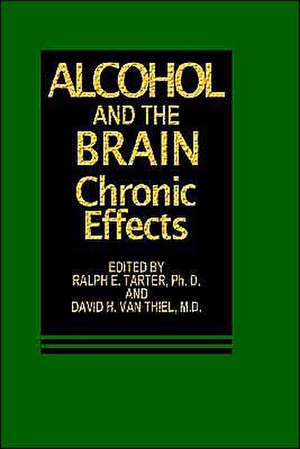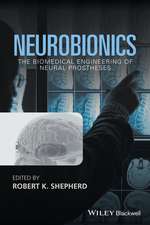Alcohol and the Brain: Chronic Effects
Editat de R.E. Tarter, D.H. Van Thielen Limba Engleză Hardback – 30 aug 1985
| Toate formatele și edițiile | Preț | Express |
|---|---|---|
| Paperback (1) | 1097.18 lei 6-8 săpt. | |
| Springer Us – 30 mai 2013 | 1097.18 lei 6-8 săpt. | |
| Hardback (1) | 1105.40 lei 6-8 săpt. | |
| Springer Us – 30 aug 1985 | 1105.40 lei 6-8 săpt. |
Preț: 1105.40 lei
Preț vechi: 1163.58 lei
-5% Nou
Puncte Express: 1658
Preț estimativ în valută:
211.55€ • 218.54$ • 176.06£
211.55€ • 218.54$ • 176.06£
Carte tipărită la comandă
Livrare economică 25 martie-08 aprilie
Preluare comenzi: 021 569.72.76
Specificații
ISBN-13: 9780306419980
ISBN-10: 030641998X
Pagini: 350
Ilustrații: XVI, 350 p.
Dimensiuni: 156 x 234 x 22 mm
Greutate: 0.69 kg
Ediția:1985
Editura: Springer Us
Colecția Springer
Locul publicării:New York, NY, United States
ISBN-10: 030641998X
Pagini: 350
Ilustrații: XVI, 350 p.
Dimensiuni: 156 x 234 x 22 mm
Greutate: 0.69 kg
Ediția:1985
Editura: Springer Us
Colecția Springer
Locul publicării:New York, NY, United States
Public țintă
ResearchDescriere
Chronic and excessive alcohol consumption disrupts a number of biologic sys tems. Central nervous system pathology, associated with long-standing alcohol ingestion, has particularly deleterious consequences to the individual. Compro mising brain functional integrity ultimately militates against psychosocial ad justment, and this process is inevitably reflected as a substantial economic loss to society in the form of costs for providing medical and social services, as well as disability and absenteeism from work. This book marshals the literature pertinent to the effects of chronic alcohol abuse on brain structure and functioning. The material is divided into two parts: basic research and clinical issues. In the first section, the manifest neurologic consequences are described across the different levels of biologic organization, these being brain morphology, neurochemistry, neurophysiology, and neuro psychology. In recognition of the multifactorial etiology of alcohol-related brain pathology, the influence and role of hepatic, endocrine, and nutritional factors are also examined. The second section addresses clinical syndromes and dis orders. It will be noted that evidence accrued from recent research suggests that neurologic disturbances may actually antedate the onset of drinking in some alcoholics. Other clinically important issues discussed are the effects of alcohol on neurologic development, aging, and dementia. The book concludes with a discussion of the alcohol withdrawal syndrome, its mechanisms and manifes tations. A fundamental objective of the editors was to illustrate that the consequences of chronic alcohol excess can be comprehensively understood within the per spective of interrelated hierarchical systems of brain organization.
Cuprins
I. Basic Research.- 1. Neuropathology of Alcohol Abuse.- 2. Ethanol’s Action on Brain Biochemistry.- 3. Endocrine Effects of Chronic Alcohol Abuse: Hypothalamic—Pituitary—Gonadal Axis.- 4. Nutrition and Alcoholism.- 5. Hepatocerebral Interactions.- 6. Human Brain Electrophysiology and Alcoholism.- 7. Neuroradiologic Investigations of Alcoholism.- 8. Neuropsychology of Alcoholism.- II. Clinical Issues.- 9. Biologic and Psychosocial Determinants in the Etiology of Alcoholism.- 10. Ethanol: Effect on Fetal Brain Growth and Development.- 11. Dementia Associated with Alcoholism.- 12. Wernicke—Korsakoff Syndrome.- 13. Biologic Properties of Ethanol and the Biphasic Nature of Ethanol Withdrawal Syndrome.









